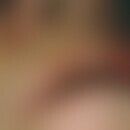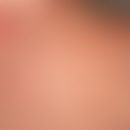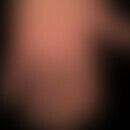Synonym(s)
DefinitionThis section has been translated automatically.
Cutis laxa is the name given to a heterogeneous group of hereditary diseases whose main symptom is a pendulous, inelastic (in contrast to Marfan's syndrome and Ehlers-Danlos syndrome) skin. These cutaneous characteristics are almost always due to loss, fragmentation or severe disorganization of the elastic fibers. The systemic significance of this disorder of elastogenesis affects different organ systems. Apart from the skin, lungs and vessels are mainly affected. The hereditary forms of Cutis laxa are triggered by mutations in different genes (e.g. PYCR1, LTBP4, ATP6V0A2 and others), which are functionally involved in the build-up or breakdown or organisation of elastic fibres. In principle, autosomal dominant forms can be distinguished from autosomal recessive forms, independent of the gene system. If the clinical phenomenon "cutis laxa" or rather "cutis laxa-like skin changes" is considered in terms of differential diagnosis, further hereditary as well as acquired clinical pictures have to be taken into account.
EtiopathogenesisThis section has been translated automatically.
A mutation is present in the FBLN5 gene, gene location 14q32.12, which codes for fibulin 5 (Papke CL et al. 2014). Fibulins comprise a group of extracellular matrix proteins or matricellular proteins that are composed of a tandem of an epidermal-growth factor-like domain with a C-terminal fibulin-typical module. The family consists of 7 members, fibulins 1 to 7 (de Vega S et al. 2014). For functional and molecular reasons, the fibulin group can be divided into long fibulins, fibulins 1/2/6, and short fibulins, fibulins 3/4/5/7 (Papke CL et al. 2014). Chemically, all fibulins are glycoproteins that are embedded in the fibrillar extracellular matrix of different organ systems in varying densities. For example, fibulin 4 is essential for the structure and function of the walls of large vessels (Papke CL et al. 2014).
Clinical featuresThis section has been translated automatically.
The clinical spectrum of autosomal recessive cutis laxa is very heterogeneous with respect to organ involvement and severity. Type IA of autosomal recessive cutis laxa (ARCL1A) is a specific, life-threatening disease with organ involvement, pulmonary atelectasis and emphysema, diverticula of the gastrointestinal and urogenital system and vascular anomalies (pumonal artery stenosis). Associated are cranial anomalies, later closure of the fontanel, joint flaccidity, hip luxation and inguinal hernia have been observed, but are rare. The electron microscopic reduction of elastic fibers in the dermis and abnormal elastin components is pathognomonic.
LiteratureThis section has been translated automatically.
- Scherrer DZ et al (2013) Mutations in PYCR1 genes in three families with autosomal recessive cutis laxa, type 2 Eur J Med Genet 56:336-339.
- de Vega S et al (2014) A C-terminal fragment of fibulin-7 interacts with endothelial cells and inhibits their tube formation in culture. Arch Biochem Biophys 545:148-153.
- Kouwenberg D et al (2011) Recognizable phenotype with common occurrence of microcephaly, psychomotor retardation, but no spontaneous bone fractures in autosomal recessive cutis laxa type IIB due to PYCR1 mutations.Am J Med Genet A 155A:2331-2332
- Loeys B et al (2002) Homozygosity for a missense mutation in fibulin-5 (FBLN5) results in a severe form of cutis laxa. Hum Mol Genet 11:2113-2118.
- Papke CL et al (2015) Loss of fibulin-4 disrupts collagen synthesis and maturation: implications for pathology resulting from EFEMP2 mutations.Hum mole of gene 24:5867-5879.
Incoming links (1)
FBLN5 Gene;Disclaimer
Please ask your physician for a reliable diagnosis. This website is only meant as a reference.



